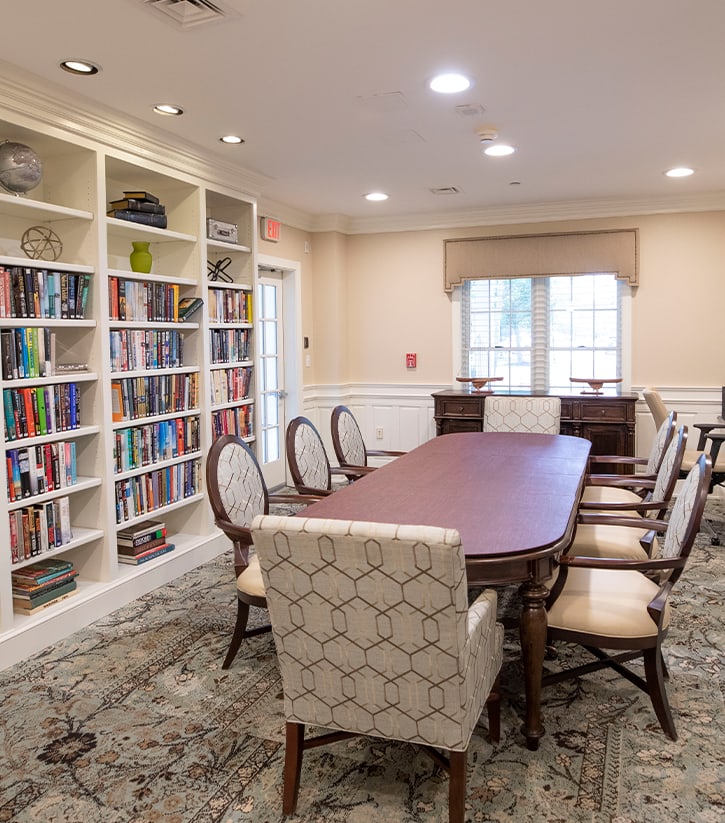Learning the differences between independent and assisted living can help families and potential residents find a community that aligns with their unique lifestyles and health needs.
Independent living is ideal for older adults who are relatively active, social, and self-sufficient, and look forward to freedom from home maintenance. Meanwhile, assisted living is suitable for people who are relatively independent and benefit from support with daily tasks.
These two care communities may appear similar but have several key distinctions that include:
- Level of care
- Services and amenities
- Social activities
- Financial costs
Understanding Independent Living
For older adults who are self-sufficient, active, and seeking a community lifestyle that offers convenience from mundane household chores, independent living communities are ideal.
This environment encourages residents to live carefree, without the hurdles of home maintenance, allowing them to focus their time and attention on their hobbies, exploring new interests, and maintaining and fostering social connections.
Independent living is most pleasant for older adults who are relatively healthy, active, and can complete daily tasks without support. Residents have worked hard to enjoy the adventure this world has to offer, and our community continues to foster this sense of whimsy during their golden years.
Residents value their independence while appreciating the perks of on-site services and amenities, like:
- Wellness Clinic
- Fitness center
- Pool and spa
- Housekeeping
- Onsite therapy
While independent living is most suitable for older adults who are relatively active, mobile, and self-sufficient, it also provides ongoing assistance and social support as needed but without extensive health services.
Understanding Assisted Living
Assisted living communities are long-term care environments for older adults who are relatively independent, but need help completing daily activities.
This environment bridges the gap between independent living and full-time intensive care, making it an attractive option for residents and their families.
Residents in assisted living are generally mobile, and self-sufficient, but benefit from additional support with tasks like personal care, medication management, meal preparation, and housekeeping.
Professional care staff are available 24/7 for ongoing support, to meet the ever changing care news of residents as their health status evolves while fostering independence. We personalize our approach to care by tailoring resident’s unique needs to confirm they are receiving the appropriate level of care.
Similar to independent living, residents in assisted living are granted the opportunity to take a step back from mundane daily tasks and focus on fostering social connections and exploring new interests and hobbies, but in a more structured environment.
In assisted living, residents can enjoy the convenience of onsite services and amenities that include:
- Salon and spa services
- Transportation services
- Wellness programs
- 24/7 onsite nursing staff
- Social events and activities
- Ongoing health management
Independent Living vs Assisted Living
Finding a community that provides the appropriate level of care for your loved one is vital for their health and overall well-being.
Everyone has unique needs and preferences. A one-size-fits-all approach can lead to significant gaps in care. A community that aligns with a loved one’s specific medical, social, and emotional needs confirms these qualities are consistently met.
Transitioning to a living environment that doesn’t align with these needs can negatively impact overall well-being due to increasing social isolation or lack of appropriate supervision, leading to safety concerns.
Recognizing the differences between independent living and assisted living is key because they directly impact a loved one’s quality of life.

Level of Care
Independent living communities are designed for self-sufficient older adults who require minimal to no assistance with daily activities. It appeals to those looking for an active and connected lifestyle without the responsibilities of home maintenance.
Therefore, extensive healthcare services aren’t usually included in these environments.
Compared to independent living, assisted living offers a greater level of care, supporting residents who require daily support with tasks while promoting independence.
Residents benefit from onsite nursing support and health monitoring, making it suitable for people with evolving care needs.
Services & Amenities
Both communities encourage residents to focus their energy on exploring new hobbies, and interests, and fostering new friendships, understanding the physical and emotional benefits of social connection.
However, because of the difference in their level of care, their services and amenities differ ever so slightly.
Independent living offers convenience and recreation without focusing heavily on health-driven services like nursing care, health monitoring, and diabetic care, all of which are offered in assisted living.
Social Activities
Social activities in independent living and assisted living communities are tailored to the resident’s independence and care needs.
In independent living, social activities focus on promoting autonomy. Residents are encouraged to engage in a range of self-directed activities and events catering to their interests, hobbies, and preferences.
This approach allows residents to explore and participate in their community at their own pace, fostering a sense of personal empowerment and maintaining their active lifestyle.
On the other hand, assisted living communities provide social activities designed to balance engagement with residents’ varying physical abilities. These activities often incorporate elements that are recreational and supportive of cognitive and physical health, taking on a more structured approach when compared to independent living.
Financial Considerations
The cost structure is one of the primary variations between these two housing options.
Independent living communities generally involve costs primarily focused on housing, utilities, amenities, and recreational activities. Since healthcare services aren’t a core component of independent living, residents may need to budget separately for any additional personal care or medical services they require outside the community’s offerings.
However, assisted living typically incorporates a more comprehensive pricing model.
These costs include housing, amenities, and health care services like health monitoring and diabetic care. With a more all-inclusive approach, assisted living can be more expensive, but residents’ healthcare needs are thoroughly met within the community.
Budgeting for these arrangements may require looking at current and potential future care requirements alongside long-term affordability.
Schedule a Visit
Recognizing how independent living and assisted living differ helps determine which care environment is most appropriate to meet the physical, social, and emotional needs of your loved one.Connect with our team at Retired Unlimited, Incorporated at Bay Lake to see how our community brings independent living, assisted living, and memory care together into one cohesive community.













